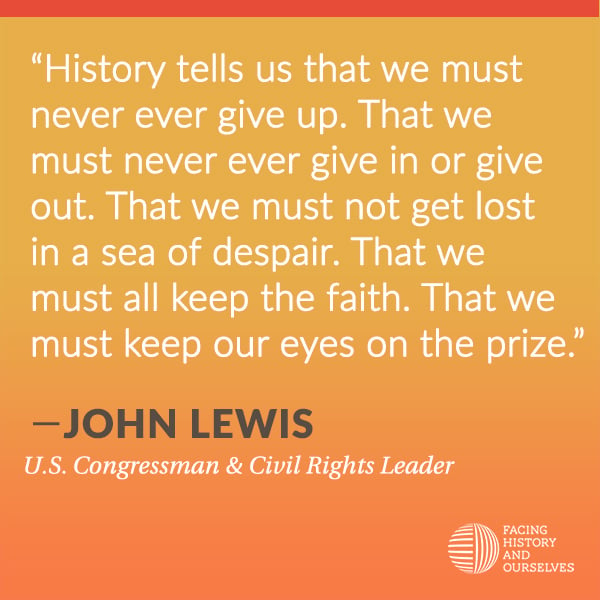Done!
Not done-done but started-done, Celebrate the Day is launched with seven full days of entries, and featured items up through the end of November. The plan for daily entries got changed when I saw a way to make a tidy little index without having to use each day's posts in the sidebar "My Blog" list as a guide for finding specific dates. More work but I think it makes me look like I know what I'm doing.
On good days I'm gonna come over here and say a little about the events and people in that day's post. There's very little to cover on August 28 once you get past the murder of Emmett Till (1955) and the March on Washington for Jobs and Freedom (1963). All I can think of is, if you're a moderately famous or accomplished black person with this birthday, the odds of being included in a Today in Black History list are about the same as being born on December 25 and not getting a birthday present wrapped in Christmas paper. So, happy birthday to Rita Dove (1952) and Quvenzhane Wallis (2003), and to anybody else I don't know about who's celebrating today.
I did happen to find a great quote by Josephine Baker from her MOW speech: “I am not a young woman now, friends. My life is behind me. There is not too much fire burning inside me. And before it goes out, I want you to use what is left to light the fire in you.”
Yep, I can identify with that.
Peanut Butter & Pencil Sharpeners
Musings, meta-writings, and miscellany on Black History
Sunday, August 28, 2016
Tuesday, August 16, 2016
Eleventh Annual (pre)Katrina Meltdown [and Celebrate the Day! May 1]
After six years of doing daily black history almost every day, I'm taking the big leap and starting a website (tentatively called Celebrate the Day!) with 20 to 30 entries for each day. After Tweeting and Pinning and Facebooking all this time, it seemed important to have a more permanent and accessible way to present the information. It also seemed important to "graduate" from Blogger to WordPress and I spent most of yesterday over at WP tweaking and screaming. Will it be worth it? I don't know, but one way to find out is to cross-post for a while and see which one is easier to beat into submission for a tidy final format.
Why now? My annual late summer meltdown came a little early this year. (Read about the first one in a 2011 post Make You Wanna Holla.) The photographs and magazine covers and other (mostly) light-hearted ephemera shown below are one way of coping with the time between Juneteenth and the anniversary of Barack Obama receiving the nomination for president at the 2008 DNC that seems too full of anniversaries from the Red Summer of 1919, the Long Hot Summer of 1967, and other acts of violence from every year in between. Adding the deaths of Mike Brown, Freddie Gray, Sandra Bland, and others into that time frame makes me realize once again how cyclical history is and that the "moral arc of the universe" isn't always swinging in the right direction at any given time.
Things I do In Real Life don't always turn out well. I'm old, grumpy, and in my best years was never known for playing well with others. Not to mention that after a week of a heat index over 115 degrees it doesn't seem like it's worth the effort.
But I can do this, and it feels like that's what the universe is still nudging me to do. I can Google, and track down links, and make connections between facts, and prioritize information, and organize it coherently, and maybe with more practice will even be able to write about it well. I can share it and hope that it helps somebody else to make the connection between then and now, between them and us, between our heroes and the heroic part of ourselves.
~~~~~~~~~~
May 1
The first observance of Memorial Day was a procession in Charleston on May 1, 1865 when 10,000 freedpeople consecrated an abandoned racetrack used as a Confederate prison and mass burial ground. Children and women marched with flowers, men followed in cadence with Union infantrymen including the famed 54th Massachusetts Regiment. The observance was overshadowed by later events by whites in the North and South but was recently discovered by historian David W. Blight.
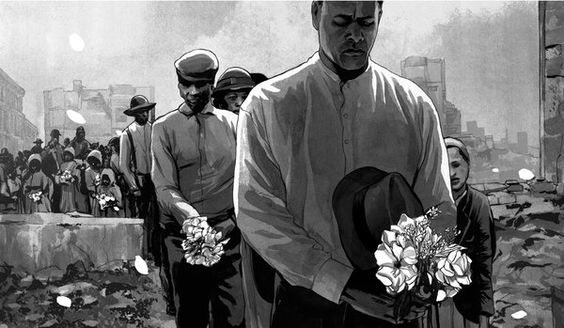
BIRTHDAYS
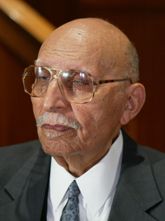
Oliver White Hill (May 1, 1907 – August 5, 2007) Richmond, Virginia. Lead attorney with Davis v. County School Board of Prince Edward County, which was consolidated with Brown v. Board of Education at the Supreme Court; First African American Richmond City Council member (1949). Highly decorated with the top-prize being the Presidential Medal of Freedom bestowed by President William J. Clinton (1999).
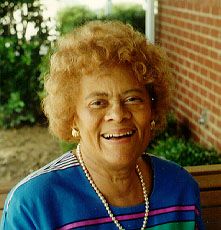
Evelyn Boyd Granville (born May 1, 1924) was the second African American woman to earn a PhD in mathematics, granted by Yale in 1949. She taught briefly at Rusk College before beginning a career in aerospace developing computer procedures with IBM, NASA, and other private contractors. She later taught at Cal State LA, Texas College, and UT Tyler and worked to improve math education at all levels.
Max R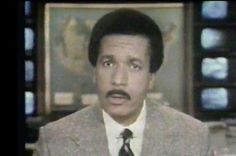 obinson (May 1, 1939 – December 20, 1988): Robinson became the first black national news anchor in America as the co-anchor of ABC Nightly News. He succumbed to AIDS-related complications at 49.
obinson (May 1, 1939 – December 20, 1988): Robinson became the first black national news anchor in America as the co-anchor of ABC Nightly News. He succumbed to AIDS-related complications at 49.
 obinson (May 1, 1939 – December 20, 1988): Robinson became the first black national news anchor in America as the co-anchor of ABC Nightly News. He succumbed to AIDS-related complications at 49.
obinson (May 1, 1939 – December 20, 1988): Robinson became the first black national news anchor in America as the co-anchor of ABC Nightly News. He succumbed to AIDS-related complications at 49.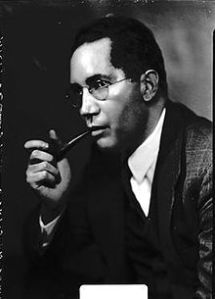
Sterling Allen Brown (May 1, 1901 - January 13, 1989) was an African American professor (Howard), author, poet, and literary critic. He was born on the campus of Howard University where his father, Sterling N. Brown, a former slave was a prominent minister and professor at Howard University Divinity School. He graduated from Dunbar High School where he graduated as the top student. He graduated from Williams College Phi Beta Kappa in 1922
Patricia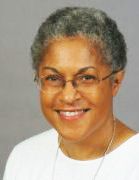 Hill Collins (born May 1,1948) is currently a Distinguished University Professor of Sociology at the University of Maryland. Also the former head of the Department of African American Studies at the University of Cincinnati . Her work primarily concerns issues involving feminism and gender within the African-American community. She first came to national attention for her book "Black Feminist Thought: Knowledge, Consciousness and the Politics of Empowerment
Hill Collins (born May 1,1948) is currently a Distinguished University Professor of Sociology at the University of Maryland. Also the former head of the Department of African American Studies at the University of Cincinnati . Her work primarily concerns issues involving feminism and gender within the African-American community. She first came to national attention for her book "Black Feminist Thought: Knowledge, Consciousness and the Politics of Empowerment
 Hill Collins (born May 1,1948) is currently a Distinguished University Professor of Sociology at the University of Maryland. Also the former head of the Department of African American Studies at the University of Cincinnati . Her work primarily concerns issues involving feminism and gender within the African-American community. She first came to national attention for her book "Black Feminist Thought: Knowledge, Consciousness and the Politics of Empowerment
Hill Collins (born May 1,1948) is currently a Distinguished University Professor of Sociology at the University of Maryland. Also the former head of the Department of African American Studies at the University of Cincinnati . Her work primarily concerns issues involving feminism and gender within the African-American community. She first came to national attention for her book "Black Feminist Thought: Knowledge, Consciousness and the Politics of Empowerment
Shauntia Latrice "Tia" Norfleet (born May 1, 1988 in Suffolk, Virginia) is an African-American drag racing and stock car racing driver. The daughter of NASCAR driver Bobby Norfleet, she has competed on a limited basis in late model racing, claims regarding her racing career becoming the subject of controversy.
EVENTS
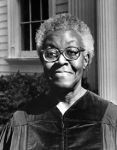 On May 1, 1950 Gwendolyn Brooks, poet, was awarded a Pulitzer Prize for "Annie Allen" (her 2nd Collection of Poetry). She became the First African American to receive the Pulitzer Prize.
On May 1, 1950 Gwendolyn Brooks, poet, was awarded a Pulitzer Prize for "Annie Allen" (her 2nd Collection of Poetry). She became the First African American to receive the Pulitzer Prize.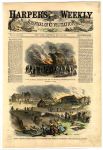 On May 1-2, 1866, Memphis suffered its worst race riot in history. Some forty-six African Americans and two whites died during the riot. Reports are that seventy-five persons were injured, one hundred persons robbed, five women raped, ninety-one homes burned, four churches and eight schools burned and destroyed, and thousands of dollars in federal property destroyed.
On May 1-2, 1866, Memphis suffered its worst race riot in history. Some forty-six African Americans and two whites died during the riot. Reports are that seventy-five persons were injured, one hundred persons robbed, five women raped, ninety-one homes burned, four churches and eight schools burned and destroyed, and thousands of dollars in federal property destroyed.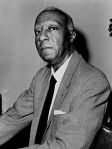 On May 1, 1941 A. Philip Randolph issued a call for 100,000 Blacks to march on Washington, D.C., to protest discrimination in the armed forces and war industries. This Protest convinced Franklin D. Roosevelt to desegregate production-plants for military supplies during World War II.
On May 1, 1941 A. Philip Randolph issued a call for 100,000 Blacks to march on Washington, D.C., to protest discrimination in the armed forces and war industries. This Protest convinced Franklin D. Roosevelt to desegregate production-plants for military supplies during World War II.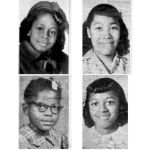 On May 1, 2001 former Ku Klux Klansman, Thomas Blanton Jr., 62, was convicted of murder for the Sixteenth Street Baptist Church bombing that killed the four girls on Sept. 15, 1963. (AP Photo, clockwise from top left: Denise McNair, 11; Carole Robertson, 14; Addie Mae Collins, 14; and Cynthia Wesley, 14. )
On May 1, 2001 former Ku Klux Klansman, Thomas Blanton Jr., 62, was convicted of murder for the Sixteenth Street Baptist Church bombing that killed the four girls on Sept. 15, 1963. (AP Photo, clockwise from top left: Denise McNair, 11; Carole Robertson, 14; Addie Mae Collins, 14; and Cynthia Wesley, 14. )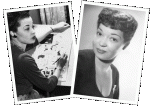 On May 1, 1937, Jackie Ormes created her first cartoon, Torchy Brown in Dixie to Harlem: an action, romance and soap opera comic featuring a black heroine named Torchy Brown. The Courier distributed it to 14 other black papers around the country making Ormes the first black woman in America to become a syndicated cartoonist. She remained the only one until the 1990s.
On May 1, 1937, Jackie Ormes created her first cartoon, Torchy Brown in Dixie to Harlem: an action, romance and soap opera comic featuring a black heroine named Torchy Brown. The Courier distributed it to 14 other black papers around the country making Ormes the first black woman in America to become a syndicated cartoonist. She remained the only one until the 1990s.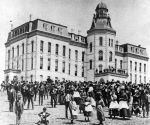 On May 1, 1867 Howard University ( named for General Oliver O. Howard), opened its doors and began accepting students
On May 1, 1867 Howard University ( named for General Oliver O. Howard), opened its doors and began accepting students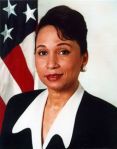 On May 1, 1997, Alexis Margaret Herman was named the 23rd U.S. Secretary of Labor & the FIRST African American appointed to the position (serving under President Bill Clinton). Prior to her appointment, she was Assistant to the President and Director of the White House Office of Public Engagement.
On May 1, 1997, Alexis Margaret Herman was named the 23rd U.S. Secretary of Labor & the FIRST African American appointed to the position (serving under President Bill Clinton). Prior to her appointment, she was Assistant to the President and Director of the White House Office of Public Engagement.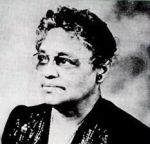
May 1, 1946, Ms. Emma Clarissa Clement, a black woman and mother of Atlanta University President Rufus E. Clement, was named "American Mother of the Year" by the Golden Rule Foundation. She was the first Afro-American woman to receive the honor.
PHOTO GALLERY

A woman holding two packages of toilet paper makes her way through looted grocery store in South Central Los Angeles after the Rodney King riots, May 1, 1992 in Los Angeles, CA.
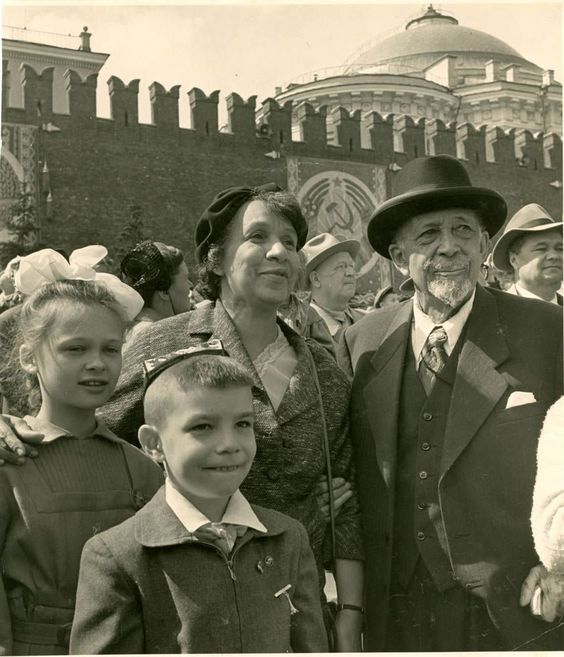
W.E.B. DUBOIS / May Day Parade, Moscow, USSR, 1959

President Barack Obama talks on the phone in the Oval Office before making a statement to the media about the mission against Osama bin Laden, May 1, 2011. The President made a series of calls, including to former Presidents George W. Bush and Bill Clinton and others, to inform them of the successful mission. (Official White House Photo by Pete Souza)
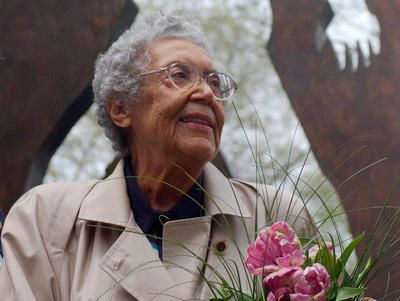
In this May 1, 2003 file photo, Sculptor Elizabeth Catlett stands in front of her "Invisible Man" sculpture in New York.. (AP Photo/Frank Franklin II, File)
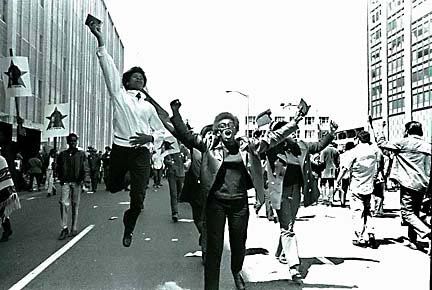
Black Panther Rally The Federal Building, San Francisco ~ May 1, 1969
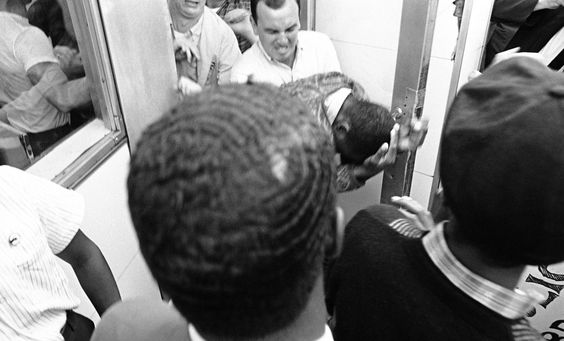
An unidentified African American demonstrator crouches for protection against blows from white man in front of segregated Nashville restaurant on May 1, 1964. Three or four African Americans were hurt in a series of scuffles between demonstrators and white men and white youths.
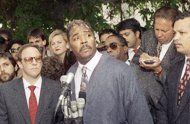
This May 1, 1992 file photo shows Rodney King making a statement at a Los Angeles news conference.
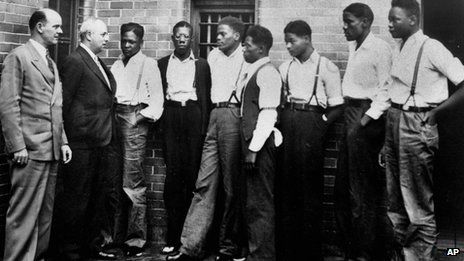
Seven of the nine Scottsboro Boys met with lawyer Samuel Leibowitz (second from left) on 1 May 1935
 Seven of the nine Scottsboro Boys met with lawyer Samuel Leibowitz (second from left) on 1 May 1935
Seven of the nine Scottsboro Boys met with lawyer Samuel Leibowitz (second from left) on 1 May 1935

CORRESPONDENCE & PUBLICATIONS
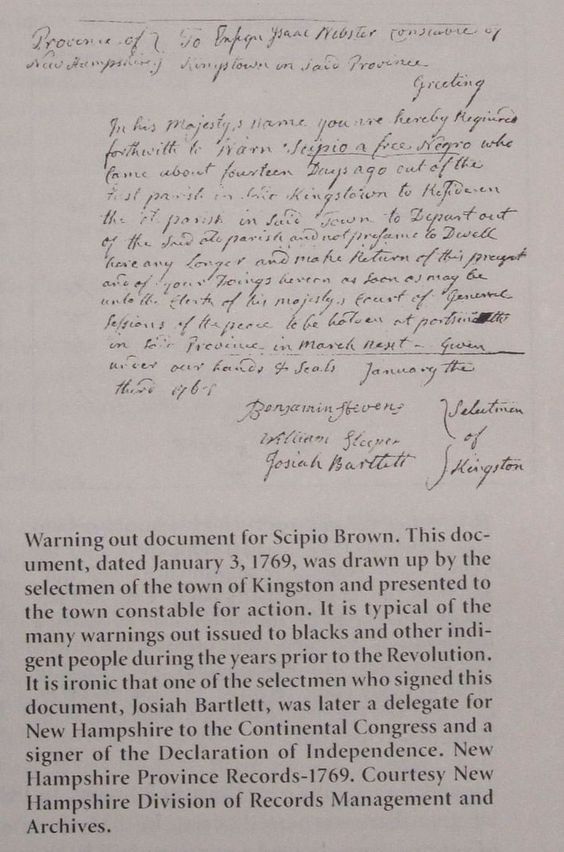
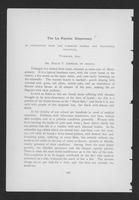
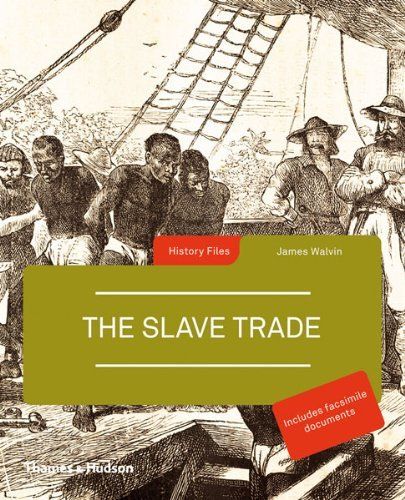
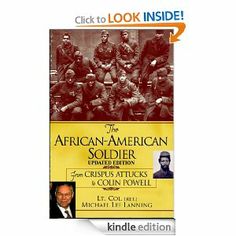
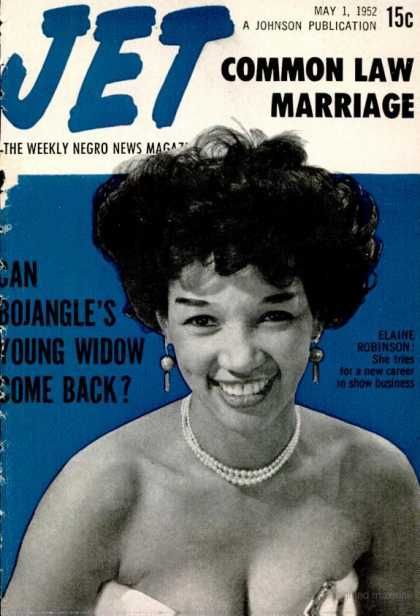
Friday, February 28, 2014
HBCU's in Texas
A summary of the Historically
Black Colleges and Universities (HBCU’s) in Texas, listed in chronological
order. There have been eleven but two are now closed.
1872 – Paul Quinn College (Dallas) was founded as the
“Correctional High School and Institute” in Austin by the AME Church. It moved
to Waco in 1877 and was known as Waco College until it took its current name in
honor of Rev. William Paul Quinn, Senior Bishop of the AME Church, who
organized funding for church-sponsored schools during the years after the Civil
War. In 1990 PQC relocated to Dallas at the former Bishop College campus. HBCU Digest named PQC
2011 HBCU of the Year, and in 2012 PQC President Michael J. Sorrell was named
HBCU Male President of the Year. PQC is also home to the WE over ME Farm, which was
created in the unused football field to bring vegetables to the South Dallas
food desert.
1873 – Wiley College (Marshall) was founded by the Methodist
Episcopal Church and named after Bishop Isaac Wiley who supervised educational
boards of the church. Wiley is best known for its debate teams of the 1930’s, winning
against National Champion USC in 1935 under the leadership of Melvin Tolson.
This victory was the basis for the 2007 film The Great Debaters in which Denzel
Washington portrayed Dr. Tolson. Another prominent faculty member at the time
was religion and philosophy professor J. Leonard Farmer, the first African
American in Texas to hold a PhD. Dr. Farmer was the father of Wiley debater and
civil rights leader James L. Farmer, Jr., founder of the Congress of Racial
Equality (CORE) and organizer of the Freedom Rides during the summer of 1961.
In addition to Farmer, notable alumni include chemist Henry Cecil McBay and
Herman Sweatt, plaintiff in the landmark case of Sweatt vs. Painter which he
filed after being denied admission to the University of Texas Law School.
1873 – Prairie View A&M was founded as “Alta Vista Agricultural and
Mechanical College for Colored Youth” on the site of the old Alta Vista
plantation near Prairie View, 50 miles northwest of Houston, as part of what is
now Texas A&M University. There were only 8 students the first year, after
which it became primarily a teacher’s college known as Prairie View Normal
Institute. The first commencement speaker was Booker T. Washington in June
1897. In 1945 it became Prairie View University, and in 1973 Prairie View
A&M University, an independent unit of the A&M system. PVAMU was the
first HBCU to create and play in a football bowl game, and its teams have
regularly led the SWAC in many sports. Some outstanding alumni are MLB first
baseman and manager Cecil Cooper, NLF Hall of Famer Ken Houston, UNCF founder
Frederick Paterson, and Inez Prosser, a 1913 graduate who was the first African
American woman to earn a doctorate in psychology. Actor Mr. T also attended but
did not graduate.
1881 – A forerunner of Huston-Tillotson University (Austin) was founded
by the American Missionary Society of Congregational Churches as “Tillotson
College and Normal Institute”. It merged with Methodist-affiliated Samuel
Huston College (founded 1900) to become Huston-Tillotson College in 1952.
Jackie Robinson was the baseball coach
in 1944 and 1945. Alumni include Azie Morton Taylor, US Treasurer during the
Clinton Administration, as well as United Methodist clergy members Zan Holmes
(former professor at SMU’s Perkins School of Theology and long-time Dallas
civil rights activist) and Cecil Williams (retired pastor of Glade Memorial UMC
in San Francisco).
1881 – Bishop College was founded in Marshall by the Baptist Home
Mission Society during a movement led by Nathan Bishop, a New England school
administrator, to provide education for African American Baptist youth in the
South. During a denominational meeting in Philadelphia, Bishop received a
pledge from the president of Baylor University to create a school in Texas. It
became known for its 2-year ministry program, and moved to Dallas in 1961 where
enrollment grew, peaking at 2,000 students in 1970. Bishop lost its
accreditation and was forced to close in 1988.
1884 – Guadalupe College was founded in Seguin by the Texas Missionary
Baptist General Convention. It closed in 1936 after a fire in the main
building.
1894 – Texas College (Tyler) was founded by the CME church. It was
briefly known as Phillips University (1909 – 1912) in honor of Bishop Henry
Phillips. It housed one campus of Tyler Junior College from 1946 to 1966 and is
best known for its teacher training programs.
1898 – St. Philip’s College was founded in San Antonio as an outreach
ministry of St. Philip’s Episcopal Church. Artemensia Bowden, the daughter of
former slaves, joined the faculty as a teacher and administrator in 1902; under
her leadership SPC went from an industrial school for girls to a high school
and, in 1927, a junior college. It ended its Episcopalian ties in 1942 when it
became part of the San Antonio Community College System, serving San Antonio’s
black community until the system was integrated in 1950.
1912 – Jarvis Christian College ( Hawkins) was founded by a joint
effort between the Christian Woman’s Board of Missions and the Negro Disciples
of Christ. It is located on land donated by James and Ida Van Zandt Jarvis,
also benefactors of TCU. Jarvis began by offering high school courses, adding
junior college courses in 1927 and upper division courses in 1938. Oil
discovered on campus land in the 1940’s provided income for several decades. It
is the only remaining college of the 12 founded by the Disciples of Christ.
1927 – Texas Southern University was founded in Houston as “Houston
Colored Junior College” by the Houston
School District concurrently with a junior college for white students, and became
a four-year school in 1934. For the previous three years, Wiley College in Marshall had operated an extension in Houston for teacher training. When Heman Sweatt filed suit after being denied
admittance to the University of Texas Law School in 1946, the court granted a
continuance for six months to allow the state to create a law school for black
students. This was done by assuming control of Houston Colored College and
renaming it Texas State University for Negroes with the requirement of teaching
"pharmacy, dentistry, arts and sciences, journalism education, literature,
law, medicine and other professional courses," stipulating that
"these courses shall be equivalent to those offered at other institutions
of this type supported by the State of Texas." (The US Supreme
Court later ruled that the facilities and distance from other law students did
not provide an equal education and Sweatt was admitted to UT.) Despite TSU’s
Jim Crow beginnings (“for Negroes” was dropped from the name in 1951) it has
become a nationally respected institution, ranking fourth in the number of
doctoral and professional degrees granted to African Americans. Alumni include
legislators Barbara Jordan and Mickey Leland, saxophonist Kirk Whalum, and
gospel singer Yolanda Adams.
1948 –
Southwestern Christian College (Terrell) was founded in Fort Worth by the
Church of Christ as “Southwestern Bible Institute”. Two years later it
relocated to the Terrell property vacated by the Texas Military Academy and
took its current name. The campus contains the first building
erected in Terrell, an octagonal-shaped house (despite its shape it was called
a "Round House") to give better protection against Indians. The house
contained the first glass windows in Kaufman County and is one of only twenty
surviving Round Houses in the country.
Sources: Wikipedia, Texas State Historical Association, college
websites when available
Wednesday, September 7, 2011
Saturday, September 3, 2011
Dear Gladys, Why did you lie to me?
 |
| Charles Hamilton Houston (9/03/1895 - 4/22/1950) |
His letters to his girlfriend since his Amherst days, Gladys Moran, show him to be a no-nonsense perfectionist—and more than a bit suspicious. Houston’s letters frequently took the form of lawyer-like interrogatories—a series of two dozen or more questions with space provided underneath each for Gladys to answer. Typical questions concerned her activities: “How many times have you been to the theatres, what theatres, and with whom?” or “When and how often have you been late to class?” When a letter from Gladys contained a misspelling, Houston sternly demanded that she practice the correct spelling: “You spell 'perhaps' wrongly; you spell it 'prehaps.' Write it below correctly 25 times and never spell it wrongly again.” (Gladys dutifully completed her assignment.) On one occasion, Houston learned from a friend that Gladys had received a “D” in a class when she claimed to have received a “B.” Houston’s wrote a terse letter, with every word underlined: “Dear Gladys, Why did you lie to me? Charlie.” Keeping a tidy house may not have been the first priority of Gladys, but a letter from Houston suggests that it might have been his: “And you better darned right pick up.” (Houston’s inquisitiveness and prickliness did not deter Gladys accepting his offer of marriage. The two wed in August 1924. They amicably divorced in 1937.)Some days it's hard to get a sense of the person I'm writing about. Other days, waaaaaay TMI.
Friday, September 2, 2011
Cat Therapy
Romare Bearden didn't seem to give up, give in, or give out.
Advice for life...
- Do what you love.
- Learn from gypsies.
- Hug a cat.
Tuesday, August 30, 2011
Make You Wanna Holla
For two months now I've been doing the birthday bios, and most of them are cookie-cutter bland. Chronological narratives of education, accomplishments, and accolades. Nothing inflammatory. If you want the dirt on anybody, look somewhere else. I've left out assorted arrests, drug use, sex, propensity for violence, and kind of skimmed over the fact that, well, yeah, Nat Turner did kill a bunch of whitefolks. Didn't even write about Michael Jackson yesterday, since I'd already skipped two days in a row and decided to make it a three-day weekend off instead of struggling with the obvious issues.
So, here I was back today, taking notes on Roy Wilkins, thinking ho-hum, NAACP wonk, yawn, Spingarn, Presidential Medal of Freedom, oh, hey, asked to resign and accused of mismanagement of funds, well kind of interesting but not really worth notice considering the NAACP leadership has been in that kind of kerfluffle ever since. And the bios happen to be on a local NAACP website, which is obviously not the best place to go into messy details of any kind.
Then I got to the part where he collaborated with J. Edgar Hoover to discredit Paul Robeson. This is how www.onthisdeity.com describes the effects of the Red Scare era persecution of Robeson:
Roy Wilkins is one of the reasons it's such an emotional challenge sometimes.
 Did I mention that I hadn't written over the weekend because I was in the middle of my sixth annual totally incapacitating "Katrina made it just too damn clear that this country doesn't care about Black people, or poor people, or maintaining a decent infrastructure for any of the people" end of the hot Texas summer meltdown? Throw in this year's extravaganza anniversary of the March on Washington for Jobs and Freedom, which in popular history had nothing to do with jobs or freedom, and has been reduced to a couple of convenient soundbites and lots of warm fuzzy feel-goods.
Did I mention that I hadn't written over the weekend because I was in the middle of my sixth annual totally incapacitating "Katrina made it just too damn clear that this country doesn't care about Black people, or poor people, or maintaining a decent infrastructure for any of the people" end of the hot Texas summer meltdown? Throw in this year's extravaganza anniversary of the March on Washington for Jobs and Freedom, which in popular history had nothing to do with jobs or freedom, and has been reduced to a couple of convenient soundbites and lots of warm fuzzy feel-goods.
So, here I was back today, taking notes on Roy Wilkins, thinking ho-hum, NAACP wonk, yawn, Spingarn, Presidential Medal of Freedom, oh, hey, asked to resign and accused of mismanagement of funds, well kind of interesting but not really worth notice considering the NAACP leadership has been in that kind of kerfluffle ever since. And the bios happen to be on a local NAACP website, which is obviously not the best place to go into messy details of any kind.
 |
| Paul Robeson |
In the 1930s and 40s, this son of an escaped slave was the most famous and widely respected Afro-American man in the world, having thrilled thousands with his commanding presence and magnificent deep baritone voice on the Broadway stage and Hollywood screen. He popularised black spirituals, and became a global working class hero when he learned over twenty languages in order to sing international folk songs in their original tongue. For two decades, he was the world’s most popular concert performer. But, by the time of his death at the age of 77 from complications following a stroke, he was a forgotten and broken man. For the last twenty years of his life, Robeson suffered a series of mental breakdowns and even twice tried to kill himself. How could such a brilliant and gifted world figure have been so comprehensively destroyed?Paul Robeson is one of the reasons I started writing about African American history.
Roy Wilkins is one of the reasons it's such an emotional challenge sometimes.
After posting Wilkins and taking a break I started on Eldridge Cleaver for tomorrow. No ho-hum there. From Panther to... Republican? Mormon Republican? Supported Reagan in 1984, after the Alzheimer's had clearly set in? I vaguely remembered Cleaver had changed course, but all that's just a little hard to take.
Another break.
Thought about Wilkins and Robeson. About Cleaver. About some of the other folks who have had birthdays lately. Carl Rowan, a corporate spokesman and board-sitter whose civil rights legacy was mostly downhill after his fifteen minutes of fame escorting Charlayne Hunter on her first day at the University of Georgia. Althea Gibson, who retired from competitive tennis because of financial reasons and had a brief career in show business, including playing John Wayne's sweetie's maid in a Civil War era western. She eventually died alone and broke.
Are those the options? Despair or denial? Either way, as Gil Scott-Heron wrote (and Marvin Gaye sang), sometimes it just makes you wanna holla and throw up both your hands.
 Did I mention that I hadn't written over the weekend because I was in the middle of my sixth annual totally incapacitating "Katrina made it just too damn clear that this country doesn't care about Black people, or poor people, or maintaining a decent infrastructure for any of the people" end of the hot Texas summer meltdown? Throw in this year's extravaganza anniversary of the March on Washington for Jobs and Freedom, which in popular history had nothing to do with jobs or freedom, and has been reduced to a couple of convenient soundbites and lots of warm fuzzy feel-goods.
Did I mention that I hadn't written over the weekend because I was in the middle of my sixth annual totally incapacitating "Katrina made it just too damn clear that this country doesn't care about Black people, or poor people, or maintaining a decent infrastructure for any of the people" end of the hot Texas summer meltdown? Throw in this year's extravaganza anniversary of the March on Washington for Jobs and Freedom, which in popular history had nothing to do with jobs or freedom, and has been reduced to a couple of convenient soundbites and lots of warm fuzzy feel-goods.
Deep breath here.
Okay. I'm not going to commit suicide. I'm not going to vote for Rick Perry. I'm not even going to spend too much time dwelling on how identical those two actions are. I'm gonna sing along with Brother Gil, and then with Brother Sam, and then get back to the Minister of Information.
Lord knows we need to know about Ministers of Information these days.
Subscribe to:
Posts (Atom)

